Apple announces new iPhone 16, AI, Watch, and more
Apple has recently announced a plethora of new news, dropping the iPhone 16, its new AI offering, Apple Intelligence, as well as the new Apple Watch Series 10, AirPods 4 & Pro 2, and more.
Meet the new iPhone 16
Apple first announced the launch of the iPhone 16 and iPhone 16 Plus, with a particular focus on its integration with Apple Intelligence, a personal system designed to deliver helpful and relevant information while prioritising user privacy. This new system uses Apple’s hardware and software to provide a tailored experience, adapting to individual user needs without compromising security.
Key innovations include the Camera Control feature, which introduces new methods for capturing and accessing visual information. The 48MP Fusion camera, equipped with a 2x Telephoto option, allows for versatile photography, while the new Ultra-Wide camera supports macro photography. Next-generation Photographic Styles and spatial photo and video capture provide users with tools to personalise their images and videos, enhancing creative expression.
The devices are powered by the A18 chip, which offers improved performance and efficiency, supporting demanding applications like AAA games while also delivering significant improvements in battery life. The iPhone 16 series comes in two sizes, 6.1-inch and 6.7-inch, with the Super Retina XDR display and OLED technology providing an enhanced viewing experience.
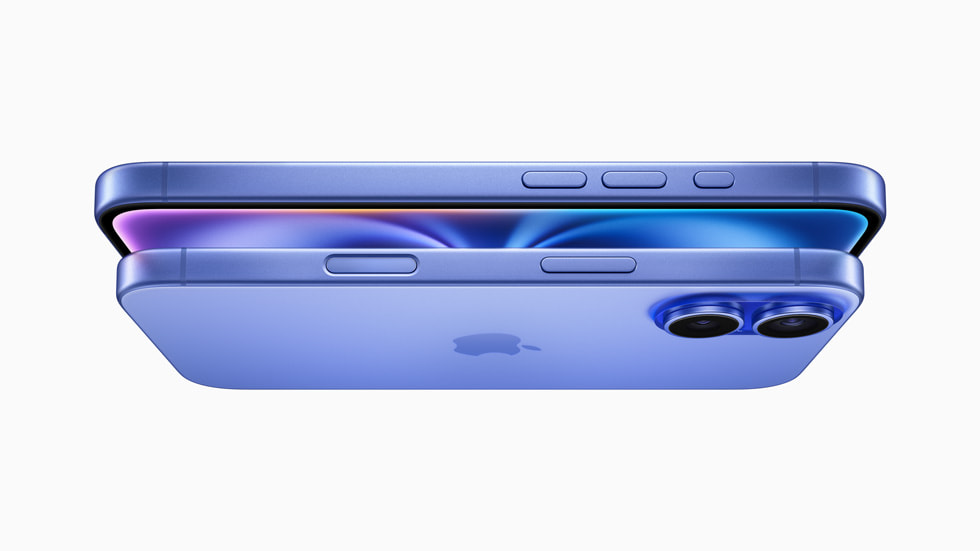
Apple Intelligence, designed to streamline everyday tasks, will be available as a free software update. It uses generative models to create and understand language and images, process tasks across apps, and maintain privacy through a combination of on-device and Cloud processing. The system includes features like Writing Tools for rewriting, proofreading, and summarising text, along with audio transcription and summarisation capabilities. Notifications can also be summarised, and Siri has been upgraded with improved language understanding and a more natural interaction experience.
Additional features are set to roll out later this year, including Image Playground, which will allow users to create images quickly, and the ability to generate personalised emojis, known as Genmoji, from text or photos. Users will also be able to use ChatGPT for further assistance across apps.
Apple Intelligence further enhances the iPhone’s search capabilities, enabling users to find specific photos and videos using natural language, while the new Clean Up tool will help remove unwanted objects from images. The A18 chip, built using second-generation 3-nanometer technology, increases power efficiency and processing speed, with up to 2x faster machine learning performance than its predecessor, the A16 Bionic. This makes the iPhone 16 well-suited for tasks requiring intensive processing, including games and AI-powered tasks.
In terms of connectivity and safety, the iPhone 16 lineup incorporates satellite communication technology, enabling users to send messages via satellite when outside cellular and Wi-Fi coverage. Emergency SOS Live Video, introduced with iOS 18, allows users to share live video or photos with emergency services during a call. Later this year, Roadside Assistance via satellite will expand beyond the U.S. to the U.K., further enhancing the iPhone’s safety capabilities.
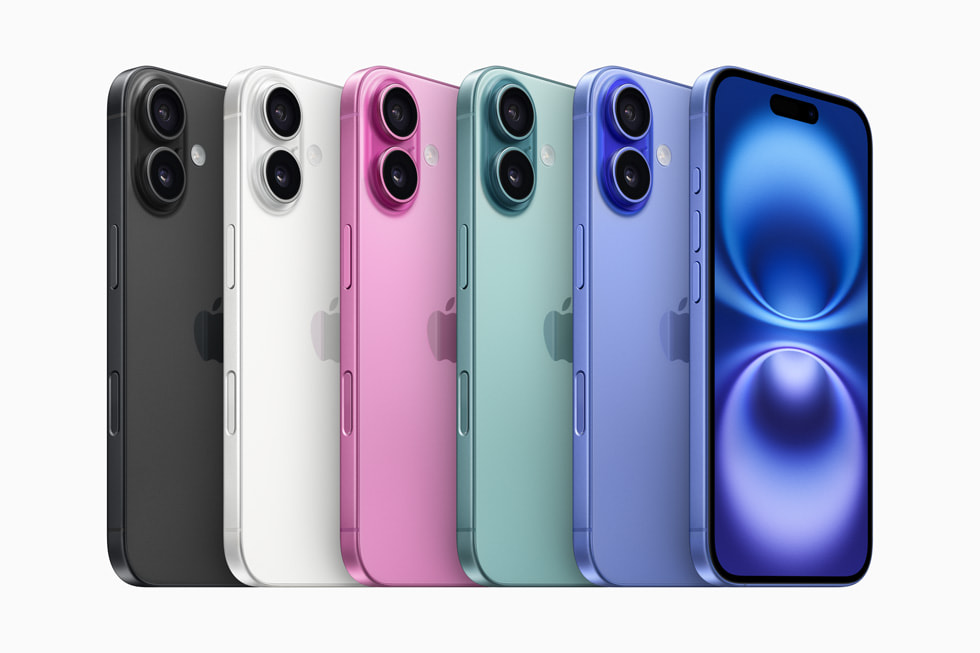
Both models will be available in five colours: black, white, pink, teal, and ultramarine. Storage options include 128GB, 256GB, and 512GB. The iPhone 16 will start at $799, with the iPhone 16 Plus priced at $899. Pre-orders open on 13th September, with the devices available on 20th September in several countries, including the U.K. An additional release in other regions, including Macao and Vietnam, is scheduled for 27th September.
The iPhone 16 Pro & Pro Max
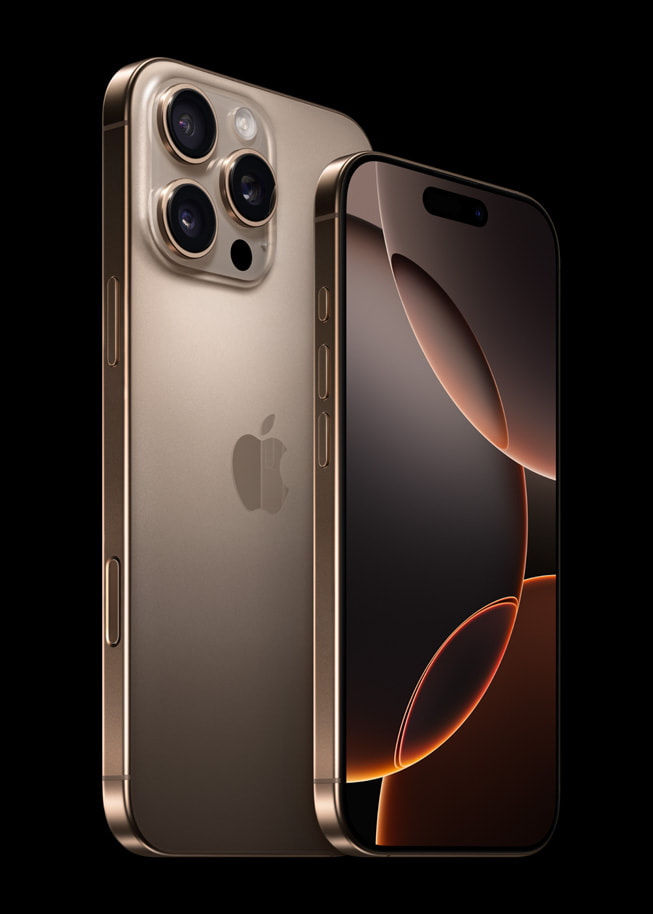
In addition to the iPhone 16, apple also revealed its premium range, the Pro & Pro Max, both of which come with substantial upgrades aimed at improving performance, user experience, and creative capabilities. These new models incorporate larger displays, advanced camera features, enhanced graphics for gaming, and cutting-edge personal intelligence features, all powered by the latest A18 Pro chip.
One of the standout features of the iPhone 16 Pro and Pro Max is the integration of Apple Intelligence. This system brings generative models directly to the iPhone, allowing users to experience a personalised intelligence system. Unlike typical virtual assistants, Apple Intelligence can understand user-specific contexts, offering tailored suggestions while safeguarding privacy. It handles everything from managing personal tasks to suggesting relevant information based on real-time user behaviour. This intelligence system is designed to work seamlessly across various apps and tasks, making the device a more intuitive and helpful tool in daily life.
The iPhone 16 Pro models deliver a substantial upgrade in camera technology, introducing a new 48MP Fusion camera with a faster quad-pixel sensor. This upgrade allows the iPhone to achieve 4K120 fps video recording in Dolby Vision—offering the highest resolution and frame rate ever on an iPhone, and setting a new standard for smartphone videography. The new sensor can capture data twice as fast, eliminating shutter lag, which enhances the quality of 48MP ProRAW and HEIF photos.
In addition to the primary camera, the iPhone 16 Pro and Pro Max include a 48MP Ultra Wide camera that offers improved resolution for wider shots, as well as macro photography. This Ultra Wide camera comes equipped with autofocus, ensuring sharper images even when focusing on close subjects.
Both models feature a powerful 5x Telephoto camera, allowing users to zoom in and capture subjects from greater distances without compromising image quality. These enhancements make the iPhone 16 Pro and Pro Max ideal for both amateur and professional photographers, offering a versatile toolkit for capturing everything from sweeping landscapes to detailed close-ups.
A new feature called Camera Control is introduced in the iPhone 16 Pro lineup, providing a more hands-on way to interact with the camera system. This intuitive tool offers a tactile switch for quickly launching the camera, taking photos, or starting video recording. A high-precision force sensor and capacitive touch enable users to adjust settings like zoom, exposure, and depth of field with a simple finger swipe on the screen.
Later updates to Camera Control will bring additional features, including a two-stage shutter button that locks focus and exposure with a light press. This will enable users to reframe shots without losing focus. Camera Control will also integrate visual intelligence tools to help users learn about objects or locations in their environment, such as identifying dog breeds or pulling up information about nearby restaurants. These features will extend to third-party apps, giving users even more creative control and utility.
Apple has also paid close attention to audio quality, introducing four new studio-quality microphones in the iPhone 16 Pro models. These mics are designed to capture true-to-life sound, complementing the video capabilities. For those using spatial audio devices like AirPods or Apple Vision Pro, video content recorded on the iPhone 16 Pro can now be enjoyed with immersive sound quality.
A new feature called Audio Mix allows users to adjust audio after video capture, enabling them to focus on voices or fine-tune environmental sounds. Additionally, wind noise reduction, powered by machine learning algorithms, ensures clearer audio recordings even in challenging outdoor conditions.
For users who value screen size and clarity, the iPhone 16 Pro and Pro Max introduce the largest displays ever seen on an iPhone: 6.3 inches on the iPhone 16 Pro and 6.9 inches on the iPhone 16 Pro Max. These Super Retina XDR displays come equipped with Always-On and ProMotion technologies, delivering smoother visuals and faster responsiveness, particularly when playing games or watching high-resolution videos. The thin borders and durable titanium design contribute to the overall sleek aesthetic, making the devices both practical and visually striking.
At the core of these new devices is the A18 Pro chip, built on second-generation 3-nanometre technology. This advanced chip architecture includes a 6-core CPU with two performance cores and four efficiency cores, enabling tasks to run 15% faster while consuming 20% less power compared to previous models. The 6-core GPU is up to 20% faster, driving real-time graphics rendering for games and other visually demanding apps. Hardware-accelerated ray tracing is now 2x faster, making in-game lighting and reflections more realistic.
Along with increased processing power, the iPhone 16 Pro Max offers significant improvements in battery life, delivering the longest-lasting battery performance of any iPhone. The Pro Max is designed to sustain high performance even during intense tasks such as 4K120 fps video recording or high-end gaming sessions. The internal design, which optimises heat dissipation, works in conjunction with iOS 18’s power management system to extend battery longevity.
The iPhone 16 Pro models are crafted with a titanium frame, which offers both strength and reduced weight. The devices feature Ceramic Shield, Apple’s toughest screen material, which is now twice as strong as the glass used in other smartphones. This combination of materials ensures that the phones are more durable, while maintaining a lightweight feel.
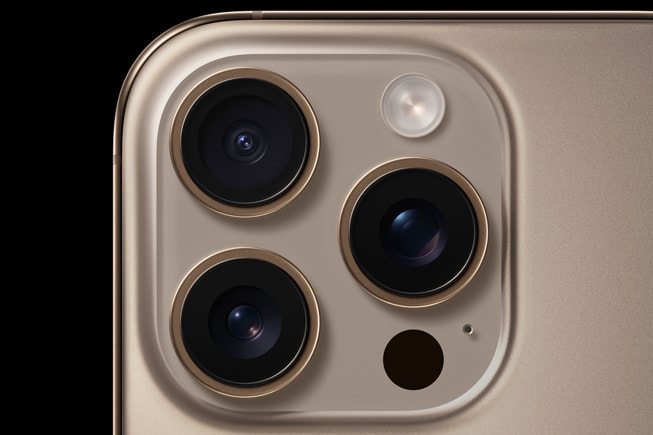
The iPhone 16 Pro models come with next-generation Photographic Styles, which allow users to customise the look and feel of their photos by adjusting colours, highlights, and shadows in real time. These adjustments are intelligent enough to consider skin tones, ensuring that portrait shots appear more natural. Users can apply these custom styles live or after taking a photo.
For professionals, the iPhone 16 Pro series offers new options for capturing and editing video. The A18 Pro chip’s image signal processor allows for cinema-quality frame-by-frame colour grading in 4K120 fps Dolby Vision, making it a powerful tool for filmmakers. Users can also record 4K120 fps ProRes and Log video directly to an external storage device, improving workflow efficiency for high-resolution video projects.
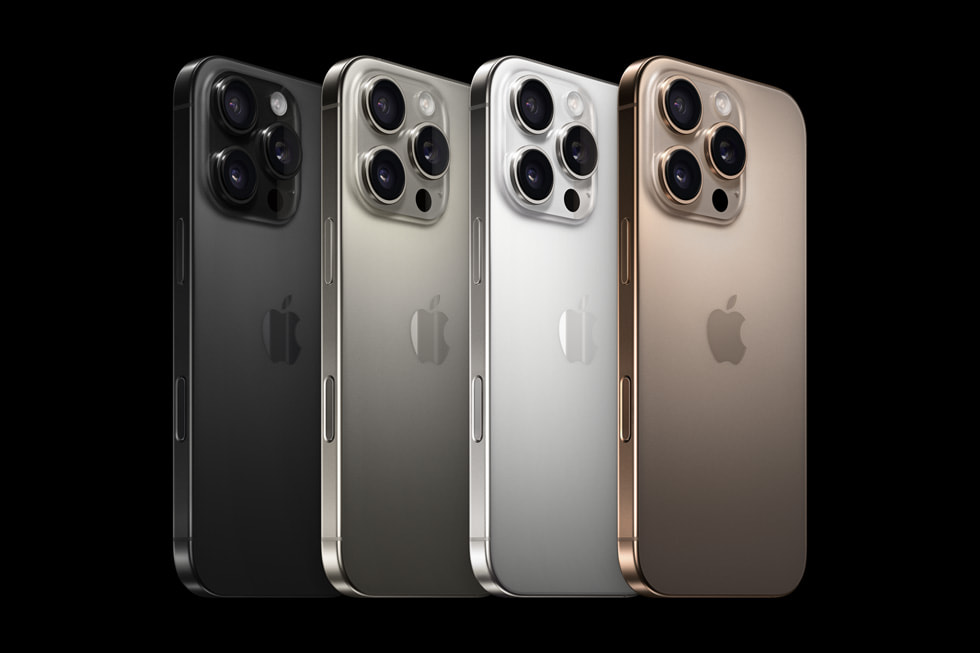
The iPhone 16 Pro and iPhone 16 Pro Max will be available in four finishes: black titanium, natural titanium, white titanium, and desert titanium. Storage options include 128GB, 256GB, 512GB, and 1TB. Prices for the iPhone 16 Pro start at $999 (US), while the iPhone 16 Pro Max starts at $1,199 (US). Pre-orders open on 13th September, with availability beginning on 20th September.
In summary, the iPhone 16 Pro and iPhone 16 Pro Max offer a significant leap in both hardware and software, combining powerful performance with innovative new features designed to enhance creativity, productivity, and everyday use. From Apple Intelligence to the advanced camera system, these devices represent the next step forward in smartphone technology.
Apple Intelligence - Apple’s new AI offering
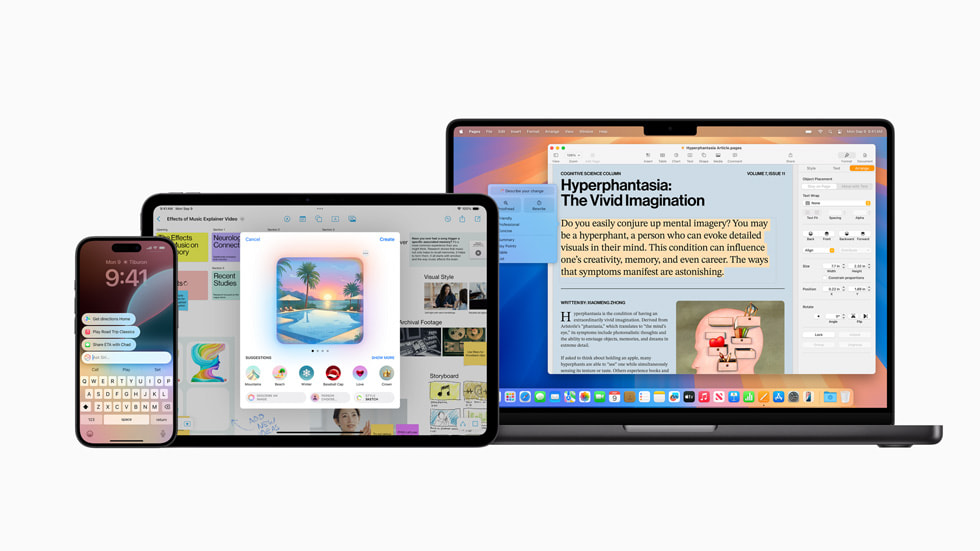
In addition to the new iPhone, Apple also revealed its much-anticipated AI project, Apple Intelligence. This new offering is designed to be a personal system combining generative models with personal context to deliver highly relevant and useful information and will begin rolling out next month with iOS 18.1, iPadOS 18.1, and macOS Sequoia 15.1. Additional features are expected to be introduced over the coming months. Apple also introduced its new iPhone 16 lineup, which is designed to fully leverage Apple Intelligence, powered by the more efficient and faster A18 and A18 Pro chips.
Initially, Apple Intelligence will be available in U.S. English, with expansion to localised English versions for Australia, Canada, New Zealand, South Africa, and the U.K. in December. Additional languages, including Chinese, French, Japanese, and Spanish, are planned for release next year.
Apple Intelligence is deeply integrated into iOS 18, iPadOS 18, and macOS Sequoia. It harnesses Apple silicon to process language, generate images, and act across various apps, simplifying everyday tasks while ensuring privacy and security. Many models run directly on-device, while Private Cloud Compute balances processing between the device and Apple’s dedicated servers when additional computational power is needed.
Among the new features is Writing Tools, which enables users to rewrite, proofread, and summarise text across apps like Mail, Notes, and Pages. In the Photos app, the updated Memories feature allows users to create personalised movies by typing a description, while natural language can be used to search for specific photos or moments in videos. A Clean Up tool removes distracting objects from photos without altering the main subject.
In the Notes and Phone apps, Apple Intelligence enables recording, transcription, and audio summarisation. When calls are recorded, participants are automatically notified, and a summary is generated after the call. Summarised Notifications across apps help users prioritise tasks, while Reduce Interruptions minimises distractions by only surfacing notifications that require immediate attention. In Mail, Priority Messages highlights time-sensitive emails, and Smart Reply offers quick-response suggestions.
Siri has also been updated with a more natural and flexible interaction style. It now has a redesigned interface, including a glowing light around the screen edge when activated on iPhone, iPad, or CarPlay. On Mac, Siri can be placed anywhere on the desktop for easy access. Users can switch seamlessly between typing and voice commands, and Siri can now maintain context from one request to the next. Additionally, Siri’s expanded product knowledge allows it to answer more questions about device features and settings.
More Apple Intelligence features are expected to launch later this year. These include Image Playground, which will allow users to create images quickly, and Image Wand, which enhances notes by converting rough sketches into images based on surrounding context. Users will also be able to create personalised Genmoji by typing descriptions or selecting photos of friends or family members. Siri will become even more intelligent, drawing on personal context to deliver tailored information and performing hundreds of new actions across both Apple and third-party apps. Additionally, users will have access to ChatGPT from OpenAI within iOS 18, iPadOS 18, and macOS Sequoia.

Apple Intelligence prioritises privacy, with much of the processing done on-device. For more complex tasks, Private Cloud Compute extends Apple’s privacy protections to server-based intelligence, ensuring user data is neither stored nor shared with Apple. Independent experts regularly inspect the code running on Apple’s servers to ensure compliance with privacy standards.
For users accessing ChatGPT through Siri or Writing Tools, Apple ensures that privacy protections remain in place: IP addresses are hidden, and OpenAI does not store requests. ChatGPT can be used for free without creating an account, though OpenAI’s data-use policies apply if users choose to link their accounts.
Apple Intelligence will be available as a free software update, with the first features launching next month in beta. It will be compatible with iPhone 16 models, iPhone 15 Pro models, and iPads and Macs equipped with the M1 chip or later, starting with U.S. English. Additional languages and platform support are expected to roll out next year.
The next series of Apple Watch
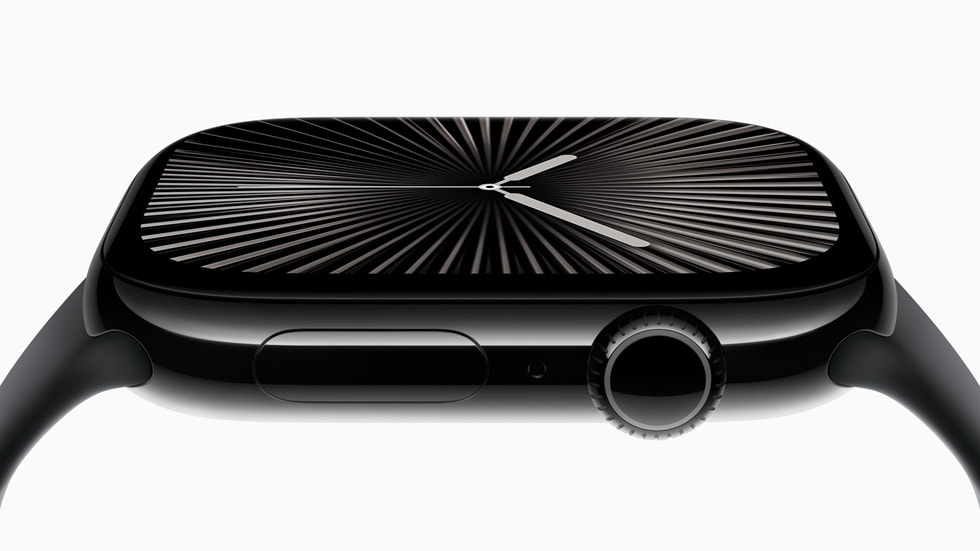
Apple also unveiled Series 10 of the popular Apple Watch, refining its design and showcasing new capabilities that the company hopes will make it “even more powerful, intelligent, and sophisticated.”
The Apple Watch Series 10 is the company's thinnest and most advanced model to date. With a slimmer design, a larger display, and enhanced health and fitness features, it brings a more comfortable and efficient user experience. New features include sleep apnea notifications, faster charging, and advanced health insights, all powered by watchOS 11.
Apple Watch Series 10 is available in both aluminium and titanium finishes. The new jet-black aluminium case offers a polished, reflective look, while the titanium cases, available in natural, gold, and slate, provide a jewellery-like shine. The Series 10 is 10% thinner than previous models and weighs less, with aluminium cases 10% lighter than Series 9 and titanium cases almost 20% lighter than their stainless steel counterparts. The watch comes in two sizes, 42mm and 46mm, with a more rounded case and wider aspect ratio to accommodate a larger display.
The Series 10 features the largest and most advanced display of any Apple Watch, with up to 30% more screen area compared to Series 4, 5, and 6, and 9% more than Series 7, 8, and 9. This allows for easier readability, interaction, and increased font sizes without sacrificing content. The wide-angle OLED display improves visibility from different angles and is 40% brighter than the Series 9 when viewed from the side. Additionally, the display is more power-efficient, with faster refresh rates and the ability to display a ticking seconds hand even in always-on mode.
The new S10 SiP chip, which powers the Series 10, delivers improved performance and power efficiency. The built-in 4-core Neural Engine supports features like the double tap gesture, on-device Siri, dictation, and automatic workout detection. Apple Watch Series 10 also maintains the popular safety features, such as Crash Detection and Fall Detection, while offering updates like the redesigned Photos face and the Smart Stack in watchOS 11.
The Series 10 features faster charging capabilities, allowing for 15 minutes of charging to provide up to eight hours of regular use, or eight minutes of charging to support eight hours of sleep tracking. Users can charge the watch to 80% in about 30 minutes, making it even more convenient to use throughout the day and overnight.
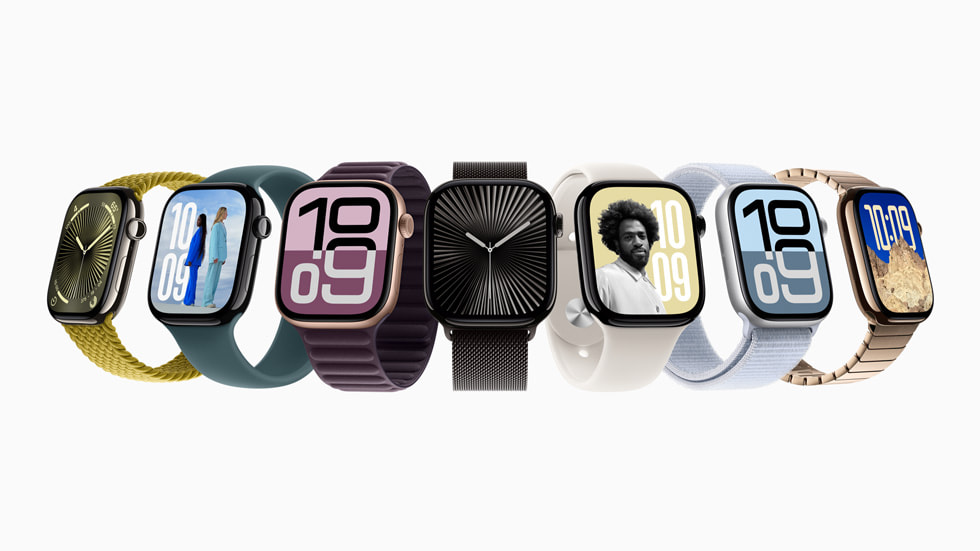
For the first time, Apple Watch Series 10 supports audio playback through its built-in speaker. Users can listen to content from Apple Music, Podcasts, and other apps directly from the watch. Enhanced phone and FaceTime audio call clarity is also available, thanks to a new voice isolation neural network that reduces background noise, ensuring clear communication even in noisy environments.
Apple Watch Series 10 is available for pre-order now, with availability beginning on 20th September. The watch is offered in a range of finishes, including jet black aluminium and polished titanium, and continues to support all the essential health, fitness, and communication features that users expect from the Apple Watch lineup.
The new AirPods 4 & more
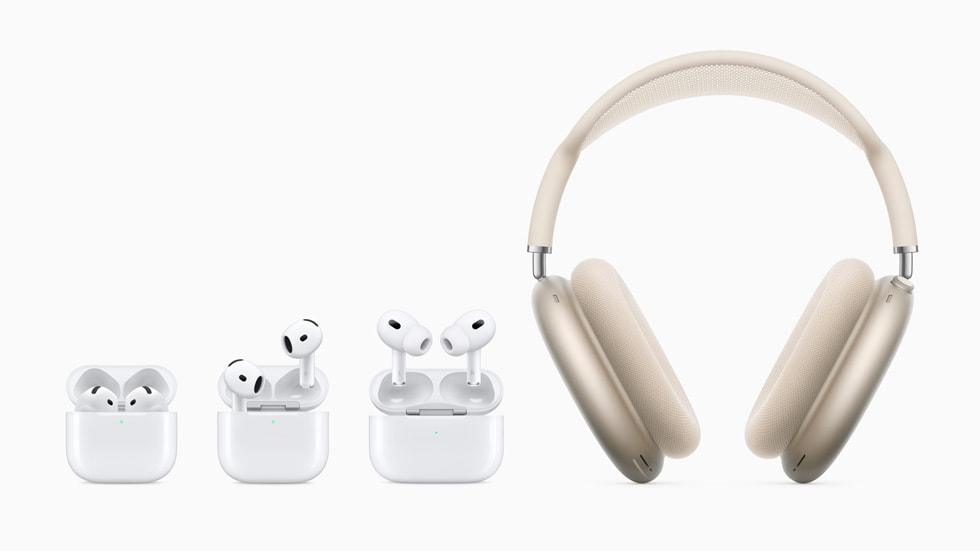
Apple, rounding off its busy day of announcements, finished by announcing the new AirPod 4’s as well as AirPod Pro 2 & Max news.
For the first time, customers now have the option to choose between two distinct models: the AirPods 4, and the AirPods 4 with Active Noise Cancellation (ANC). The AirPods 4 feature an open-ear design, delivering what Apple claims is its most comfortable fit yet. The new design is informed by advanced modelling techniques, such as 3D photogrammetry and laser topography, analysing over 50 million data points to create a shape that naturally suits a wider range of users.
In terms of sound quality, AirPods 4 introduce a completely reworked acoustic architecture, a low-distortion driver, and a high dynamic range amplifier. These enhancements, combined with Personalized Spatial Audio and dynamic head tracking, promise an immersive listening experience. Powered by the H2 chip, AirPods 4 offer features like Voice Isolation for clearer call quality and intuitive Siri interactions, where users can nod or shake their head to respond. The new force sensor on the stem also allows for quick media controls and call management.
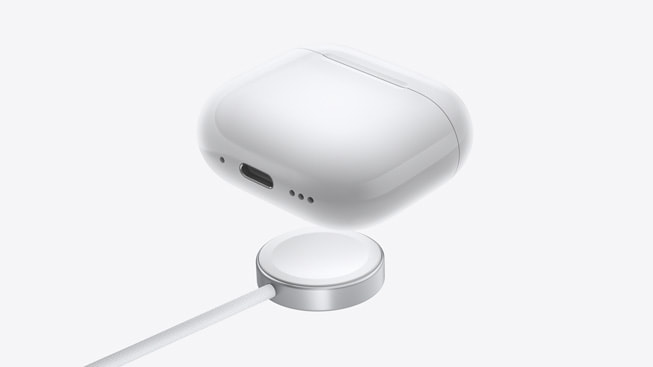
For gamers, AirPods 4 deliver low-latency wireless audio and support for high-quality 16-bit, 48kHz audio, making them suitable for both entertainment and communication during play. The charging case has been redesigned with USB-C compatibility and is over 10% smaller than its predecessor, while still offering up to 30 hours of battery life.
The AirPods 4 with ANC bring noise-cancelling capabilities to an open-ear design for the first time. This model utilises upgraded microphones, the H2 chip, and computational audio to reduce ambient sounds such as traffic and airplane noise. The ANC model also features Transparency Mode to maintain awareness of the surroundings, and Adaptive Audio, which dynamically adjusts the noise cancellation level depending on the user’s environment. Conversation Awareness automatically lowers media volume when users engage in conversations.
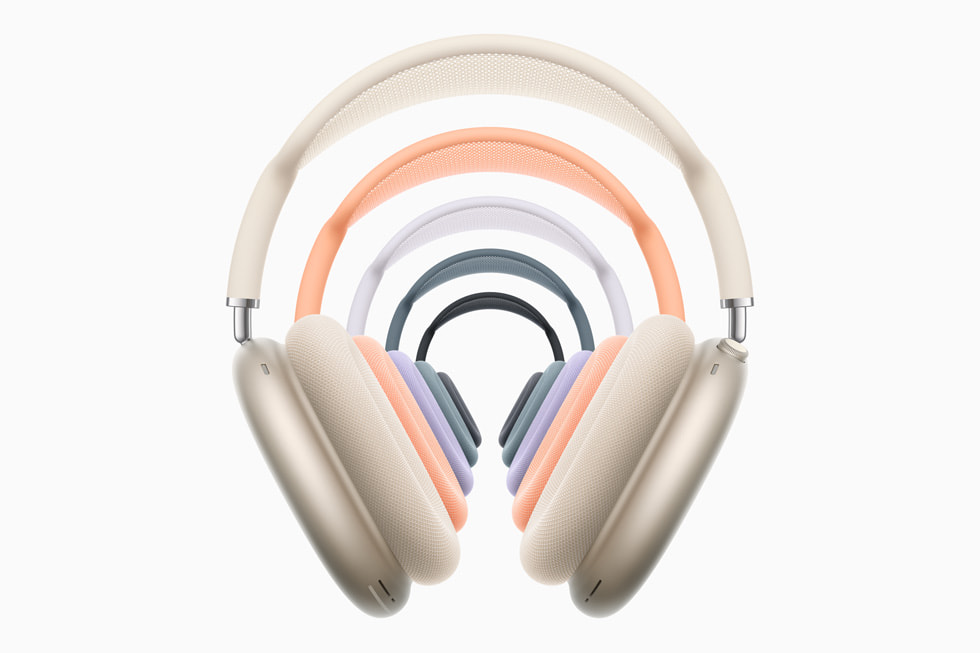
In additional news, AirPods Max will now come in five new colours—midnight, starlight, blue, purple, and orange—and have been updated with USB-C charging for added convenience.
Looking ahead, the AirPods Pro 2 will soon introduce a brand new hearing health experience. This will include Active Hearing Protection, a scientifically validated Hearing Test, and a clinical-grade Hearing Aid feature. These features are expected to be available to AirPods Pro 2 users in over 100 countries this autumn.
Pre-orders for the AirPods 4 and AirPods Max have begun, with the products available in stores from 20th September. The new hearing health features for AirPods Pro 2 will roll out later this year.










